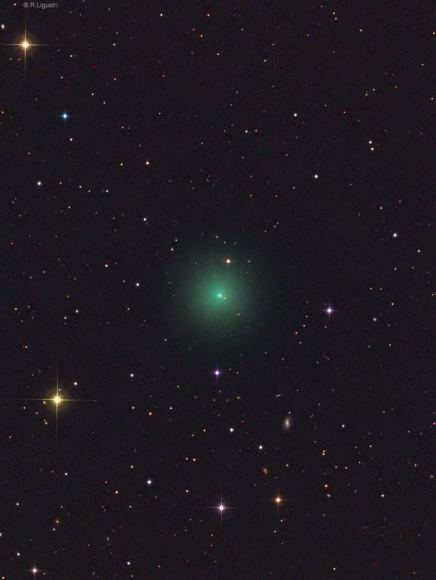
A new comet discovery crept up on us this past weekend, one that should be visible for northern hemisphere observers soon.
We’re talking about Comet C/2017 O1 ASAS-SN, a long period comet currently visiting the inner solar system. When it was discovered on July 19th, 2017 by the All Sky Automated Survey for Supernovae (ASAS-SN) system, Comet O1 ASAS-SN was at a faint magnitude +15.3 in the constellation Cetus. In just a few short days, however, the comet jumped up a hundred-fold in brightness to magnitude +10, and should be in range of binoculars now. Hopes are up that the comet will top out around magnitude +8 or so in October, as it transitions from the southern to northern hemisphere.
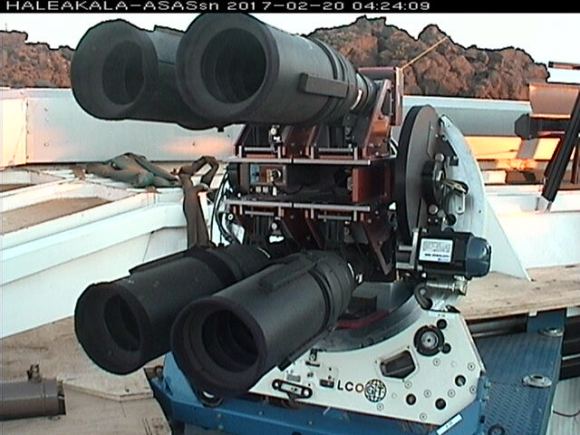
Never heard of ASAS-SN? It’s an automated sky survey hunting for supernovae in both hemispheres, with instruments based at Haleakala in Hawaii and Cerro Tololo in Chile. Though the survey targets supernovae, it does on occasion pick up other interesting astronomical phenomena as well. This is the first comet discovery for the ASAS-SN team, as they join the ranks of PanSTARRS, LINEAR and other prolific robotic comet hunters.
Evoking the very name “ASAS-SN” seems to have sparked a minor controversy as well, as the International Astronomical Union (IAU) declined to name the comet after the survey, listing it simply as “C/2017 O1”. Word is, “ASAS-SN” was to close to the word “Assassin” (this is actually controversial?) For our money, we’ll simply keep referring to the comet as “O1 ASAS-SN” as a recognition of the team’s hard work and their terrific discovery.
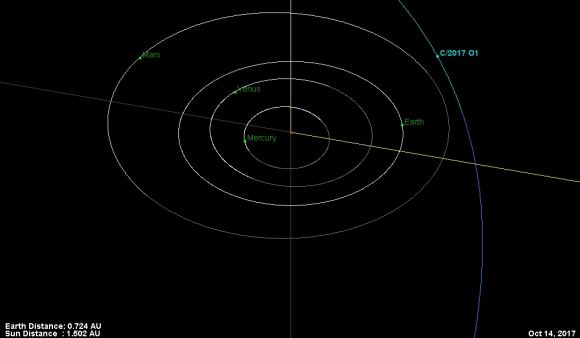
But what’s in a name, and does an interplanetary iceball really care? On a long term parabolic orbit probably measured in the millions of years, O1 ASAS-SN has an orbit inclined 40 degrees to the ecliptic, and reaches perihelion 1.5 AU from the Sun just outside the orbit of Mars on October 14th. This is most likely Comet C/2017 O1 ASAS-SN’s first passage through the inner solar system.
Currently located in the constellation Eridanus, hopefully comet O1 ASAS-SN’s current outburst holds. Expect it to climb northward through Taurus and Perseus over the next few months as it begins the long climb towards the north celestial pole.

As seen from latitude 30 degrees north, the comet will move almost parallel to the eastern horizon, and clears about 20 degrees altitude around local midnight, very well placed for northern hemisphere observers.
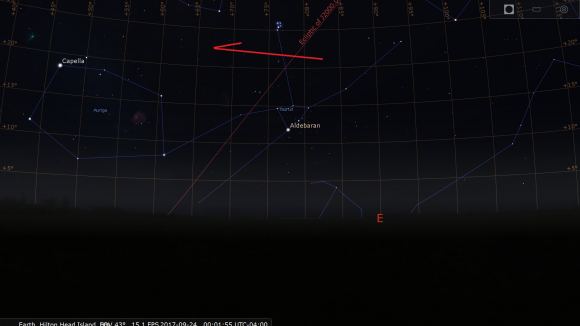
At its closest in mid-October, Comet O1 ASAS-SN will be moving a degree a day through the constellation Camelopardalis
Here’s a month-by-month blow by blow for Comet O1 ASAS-SN:
August
14- Crosses into Cetus.
16- Crosses the celestial equator northward.
20- Crosses into Taurus.
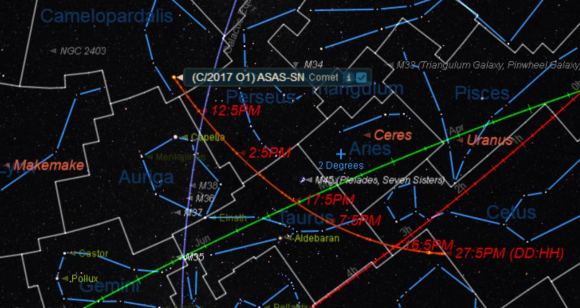
September
11-The waning gibbous Moon passes two degrees to the south.
17- Crosses the ecliptic northward.
20- Photo op: passes 4 degrees from the Pleiades open star cluster (M45).
28-Crosses into Perseus.
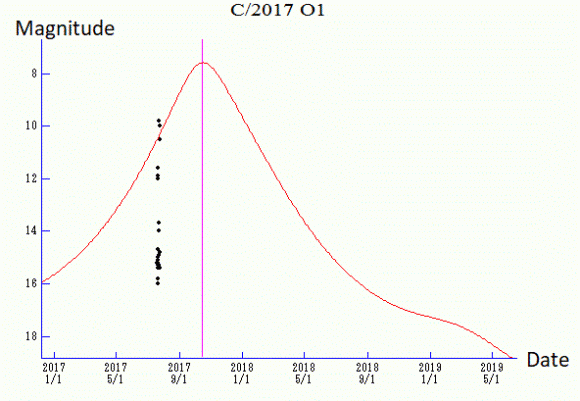
October
1-Reaches max brightness?
12-Crosses the galactic equator northward.
14-Reaches perihelion 1.5 AU from the Sun.
17-Crosses into Camelopardalis.
18- Passes closest to Earth at 0.722 AU distant.
29-Passes 10′ from the +4 mag star Alpha Camelopardalis.
November
17-Crosses into Cepheus
December
6-Passes 3 degrees from the north celestial pole.
12-Reaches opposition.
31-Drops back down below +10th magnitude
At the eyepiece, a small comet generally looks like a small fuzzy globular cluster that refuses to snap into focus. Seek out dark skies in your cometary quest, as the least bit of light pollution will dim it below visibility. And speaking of which, the Moon is also moving towards Full next week so the time to hunt for the comet is now.
We’ve still got a few weeks left before the August 21st total solar eclipse for a bright “eclipse comet” to show up… unlikely, but it has happened once in 1948.
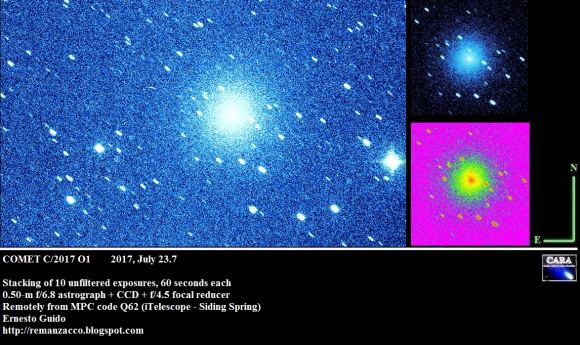
Keep in mind, current magnitude estimates for Comet O1 ASAS-SN are still highly speculative, as we seem to have caught this one in outburst… hey, remember Comet Holmes back about a decade ago in 2007? One can only dream!
-Also check out this recent NEOWISE study suggesting that large long period comets may be more common that generally thought.

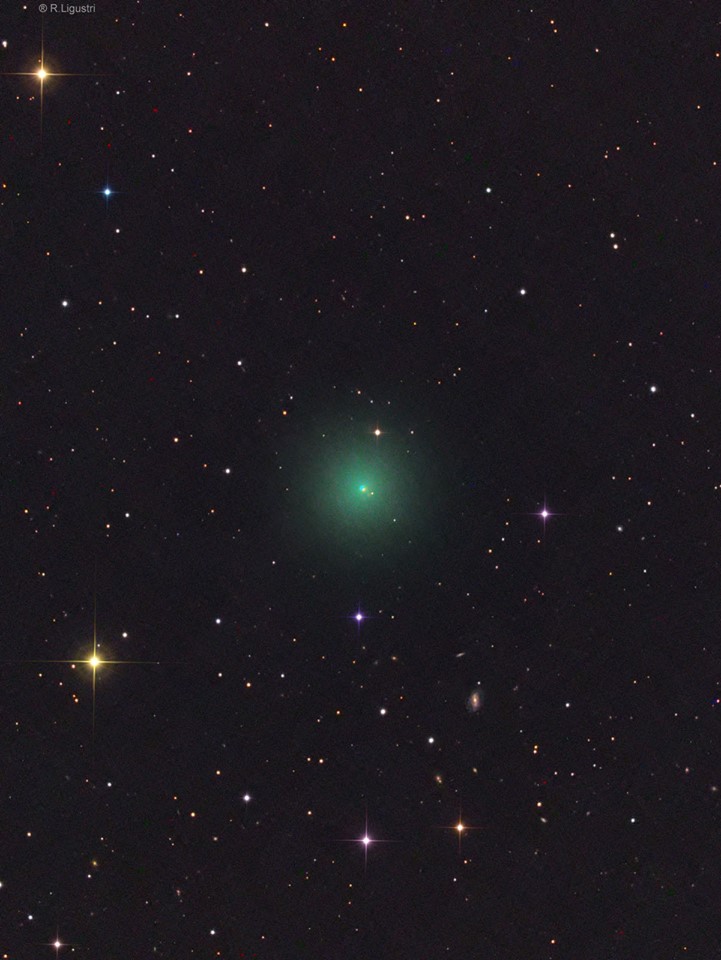
Is there a sight where we can get updated ephimerides? I used to go to the Minor Planet Center, but their comet section hasn’t been updated since 2015.
NASA’s JPL/Horizons site will do the job: https://ssd.jpl.nasa.gov/?horizons Keep in mind, they also call the comet simply “C/2017 O1…”
-Thanks,
Dave Dickinson